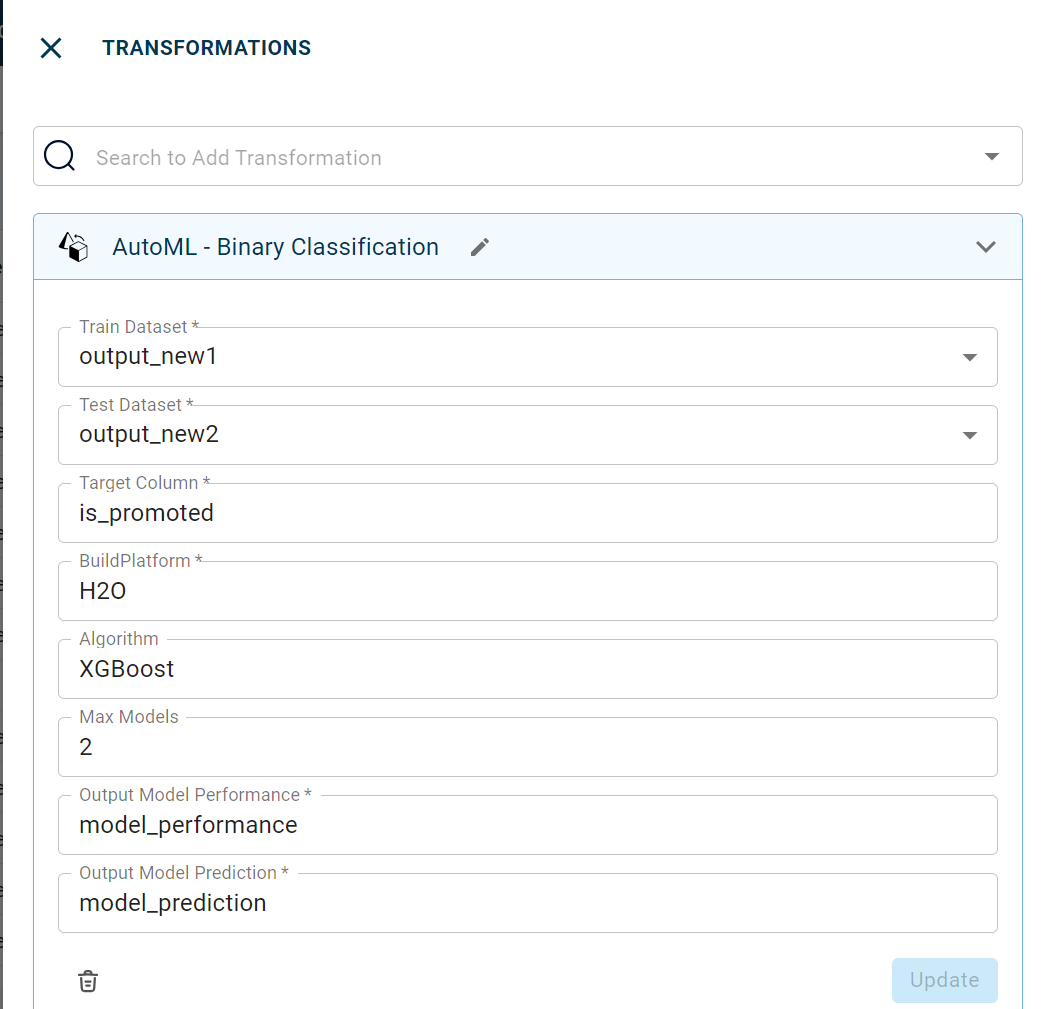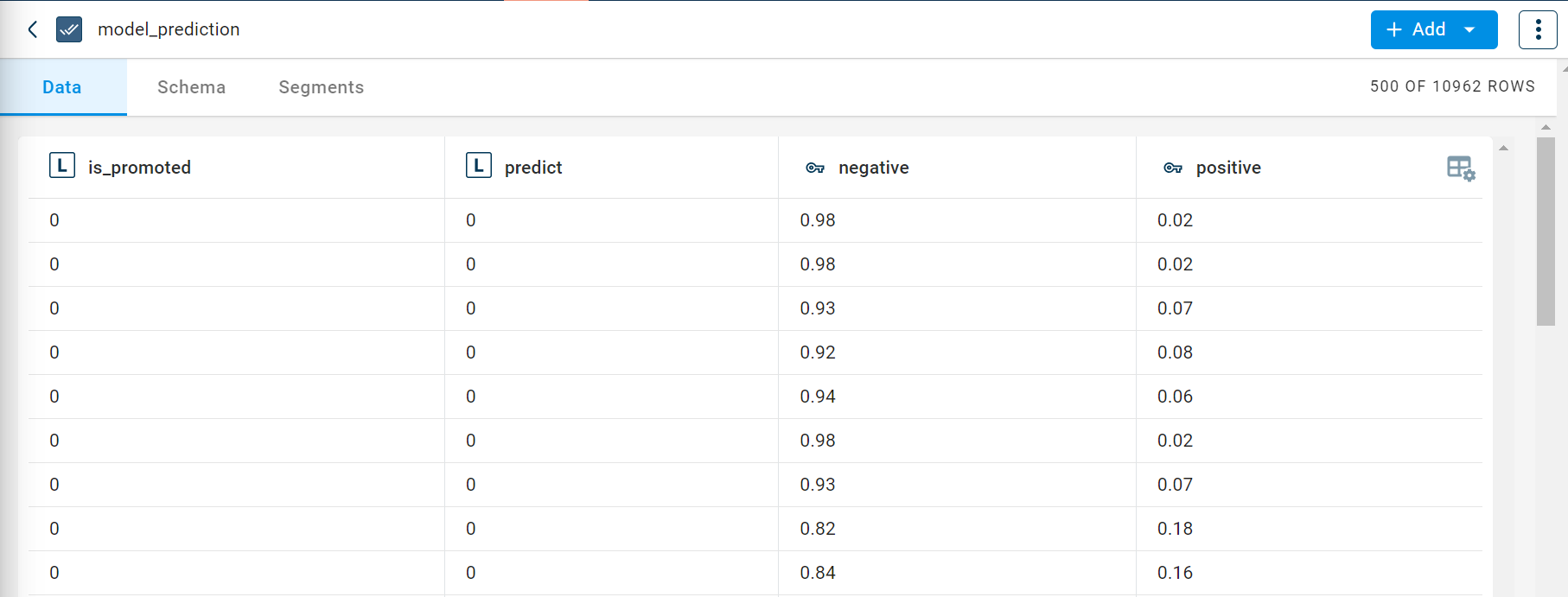Auto ML Binary class
This transform will use the selected algorithm (XGBoost, GBM, RandomForest, or Ensemble) to create models for classification problem in a dataset and returns the data with model metrics and prediction.
Parameters
The table gives a brief description about each parameter in Auto ML Binary class transform.
- Name:
By default, the transform name is populated. You can also add a custom name for the transform.
- Train dataset:
The train dataset for binary classification.
- Test dataset:
The test dataset used for binary classification.
- Target column:
The column on which predictions are made.
- Build Platform:
The platform used for creating models. By default, H20 is used. This creates multiple models.
- Algorithm:
The algorithm used to create models.
- Max:
The maximum number of models you can use on the test data to validate the model performance.
- Output Model Performance:
The file name with which the output is created. This file contains the model metrics.
- Output Model prediction:
The file name with which the output is created with the model predictions.
Sample input for Auto ML binary class transform:

The output after running the Auto ML Binary class transform on the dataset appears as below for model performance:

The output for model prediction:

The dashboard output appears as below:

How to use it in Notebook
The following is the code snippet you must use in the Jupyter Notebook editor to run the **Auto ML Binary class**transform:
transform = Transform()
transform.name = "automl binary classification"
transform.templateId = automl.id
transform.variables = {
"inputTrainDataset": train_w_fs.name,
"inputTestDataset": test_w_fs.name,
"targetCol": targetCol,
"outputModelPerformance": "model_performance",
"outputModelPredictions": "model_prediction",
}
recipe_auto_ml = project.addRecipe([train_w_fs, test_w_fs], name="auto_ml")
#recipe_auto_ml.prepareForLocal(transform, contextId="recipe_auto_ml")
recipe_auto_ml.addTransform(transform)
recipe_auto_ml.run()